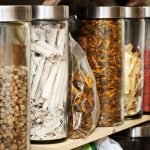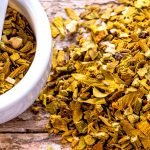Unfired Food and Apyrotrophy
Nature Cure
Sussanna Czeranko, ND, BBE
Americans who eat meat three times a day and wash their meals down with coffee, tea, and ice water are a nation of dyspeptics, employing a vast army of physicians and dentists and spending millions of dollars for poisonous drugs and patent medicines.
Otto Carqué, 1905, p. 151
The new vegetarian wants his food with all its nutritive value to the system, that is to say, he wants it uncooked, or unfired, and for that he calls himself an Unfired Fooder, or, in Greek, an Apyrotropher.
Helen Sherry, 1913a, p. 50
From the standpoint of diet the apyrotrophers are the most economical people known, for they know how to use to best advantage every fruit, every wholesome wild and cultivated vegetable, the nuts and even the flowers of wholesome plants.
George J. Drews, 1913h, p. 266
Today, the raw vegetarian diet and permaculture are all the rage, but in truth raw vegetarian diets and responsible horticulture movements parallel similar activities over a century ago. The contemporary raw vegan diet is not unique to our day, with its crisis in food production and distribution. In fact, our history points out clearly that vegetarian diets were promoted from the inception of naturopathic medicine. Indeed, over a century ago, NDs insisted that vegetarianism was the diet of choice for pursuing a path of health. So strong was their belief that “you are what you eat” that the early NDs included vegetarianism as one of the original 12 principles of naturopathy. To illustrate, Ludwig Staden, in one of the first comprehensive articles published in The Naturopath and Herald of Health on the principles of naturopathy, stated as the 11th naturopathic principle:
The food question is divided into a raw food diet consisting of fruits, berries and nuts of all kinds, besides such vegetables and cereals that can be eaten raw, and in a cooked food diet, based on the saline vegetarian theory of Dr. H. Lahmann, Dresden. (Staden, 1902, p. 18)
The vegetarian diet first proposed by the early NDs inevitably and quickly escalated into a more disciplined approach to vegetarianism and by 1913 onward dominated their attention. Helen Sherry introduced a term used in those days to refine the understanding of vegetarianism, referencing the notion of fire to distinguish between cooked and uncooked food. She explained, “The next great step which vegetarianism needed to take has now been taken by the inventors of the unfired food system” (Sherry, 1913a, p. 50). This version of vegetarianism represented a transition to a new and even radical way of eating that embraced uncooked or raw, plant-based food exclusively. The adoption of a pure, raw diet occurred about 10 years into the naturopathic story and was labeled as “apyrotrophy.”
Apyrotrophy and George Drews
Dagenbach and Drews provided the etymology for us: “Apyrotrophy: (Greek, A-un, pyros-fire, trophy-nourishing, unfired feeding) the art and science of preparing and living on unfired food for general health and the prevention and cure of disease” (1913, p. 200). It debuted in the January 1913 issue of The Naturopath and Herald of Health, exactly 100 years ago. George J. Drews, of Chicago, Ill., spearheaded the “apyrotropher movement” in The Naturopath and Herald of Health and contributed a monthly column for several years. The tagline for this column was “Apyrotrophy—the science, the art and practice of living on the moral unfired diet for the perpetuation of perfect health and cure of disease” (Drews, 1913a, p. 49).
From the very inception of apyrotrophy, conscious health-focused eating was interwoven with virtuous ideals of morality. The concept that the kind of food eaten somehow elevated one’s place in the social order was very much cultivated by the “trophers.” Drews stated: “Moral is that conduct, habit, deed or enjoyment which is supported by sound reason, good judgment, practicability, and forethought” (1913a, p. 49). The raw food devotees attached morality to food choice, and most considered raw vegetarian food as “the only moral diet known to science” (Dagenbach & Drews, 1913, p. 200). The argument that equated diet and morality was simple: if you knew a certain food to be injurious, resulting in disease, your social responsibility for being able to contribute to society was jeopardized. Disease, or even premature death resulting from malnutrition, was the war cry and vindication of the apyrotrophers. As Sherry put it, he who adopted the raw diet “had the satisfaction of feeling that he had added immeasurably to his moral stature. He is a better, healthier and mentally, a saner man than he ever was before” (1913a, p. 52). The conscious eater contributed to a higher “mode of feeding” (Sherry, 1913b, p. 122), leading, one presumes, to spiritual triumph or self-mastery.
Helen Sherry was a vocal “raw fooder” who reiterated the moral responsibility of food, proclaiming, for example: “If what we eat makes us more or less efficient in the work of the world, we are morally bound to select such a diet as will give us strength adequate to the calls upon us” (1913b, p. 122). Such a moral stance was accomplished with raw food. This same sentiment prevails to the present day in the political and social world of diet. Those who are vegetarians liken themselves to a spiritually enlightened elite, and the raw food vegans, who shun any morsel of cooked or animal foods, have aspired to the highest echelons of the dietary community.
The belief that raw plant foods were superior to cooked animal-based foods was easily established by these early naturopathic “atrophs” using persuasive statistics. The apyrotrophers (also known as atrophs) firmly believed that raw equaled morality equaled health. Heralded as “the most epoch-making and revolutionizing of all those yet discovered, this new science, according to the founder, promises to be the panacea for 95% of all ills” (Dagenbach & Drews, 1913, p. 200).
Another prominent nutrition voice supporting these claims was Eugene Christian. On the impact of dietary choices, he concurred with Drews that “about 90% of all human disease originates in the stomach, caused by errors in eating” (Christian, 1912, p. 6).
Autointoxication
For the apyrotrophers, cooking foods meant that one was choosing “an evil habit of neglect” (Drews, 1913d, p. 199). The detrimental basis of cooked foods, according to George Drews and reported by Sherry, was
that cooked food [was] unnatural, that the chemical make-up of the food [was] perverted by cooking, that the organic salts [had] been freed, mineralized and neutralized, and that cooked food [was] thus disposed to fermentation and further decay in the stomach and intestines; thus being the cause of auto-intoxication. (Sherry, 1913c, p. 124)
Autointoxication was the basis of morbid matter and at the core of the primary cause of chronic disease.
There is no better voice than Lindlahr to confirm how strongly the early NDs felt the unassailability of the relationship between food and disease to be. Lindlahr himself was diagnosed with diabetes at a time when such a diagnosis was a death sentence. He personally understood that erroneous eating habits sowed the seeds of “morbid matter” setting in motion the “conditions [that] are identical with disease because they tend to lower, hinder, or inhibit normal function and because they engender and promote destruction of living tissues” (Lindlahr, 1913, pp. 18-19). Christian echoed Lindlahr:
Disease is an abnormal condition of the human body caused by congestion or the retention of poisons, which the body is unable to throw off. Nearly all of these poisons are caused from food taken in wrong selections, proportions and combinations. (Christian, 1912, p. 6)
The diet of the masses, Drew insisted, was “a most perverted one, consisting mainly of flesh, white flour (starch) bread, refined sugar and animal fats” (1913f, p. 204). Today, we are very familiar with dietary perversions as we face a substantially documented but entirely preventable epidemic of diabetes. Our refined carbohydrate and sugar drink diet is to blame for the dismal statistics that accompany this chronicity. Presently, Mona Morstein (2012) predicted, one in three born will develop diabetes, and by 2050 the incidence of diabetes will encompass 50% of the American population.
To counteract such serious chronic presentations in society, the early NDs promoted raw foods. Their contention that the temperatures used in cooking food destroyed essential vitamins and nutrients was corroborated widely. Drews, for example, pointed to early findings reported in the already dominant allopathic journal The Lancet: “Vitamines [sic] are destroyed at temperatures largely overreached by cooking processes. If vitamines [sic] are a necessity in dietetics the conclusion is well-nigh reached that we should eat our foods raw or uncooked” (Author unknown, “Is cooking an error?” 1914, pp. 841-842). The dilemma that cooked foods posed was summarized as follows: “The majority of our foods are cooked, and . . . we are told that the process of cooking imperils the activity of a substance present which is essential to the assimilability of the food” (Drews, 1914b, p. 555).
Nutrient deficiencies found in cooked foods were also associated at the time with unnatural food cravings:
When cooked food ferments in the alimentary canal, it produces an alcohol which incites a craving for liquors, whereas unfired food, properly combined, cannot ferment and also cures habitual craving by producing an extreme aversion for the very odor of alcohol. (Dagenbach & Drews, 1913, p. 201)
The inclusion of milk in an apyrotrophic diet was also associated with fermentation. Louise Lust herself discouraged its use. Milk sugars were associated with dyspepsia, she explained. She added, “If the digestive organs are enfeebled by dietetic errors and rapid eating, milk will intensify the fermentation that is present” (L. Lust, 1921, p. 323). She continued:
Sour milk or buttermilk exert a less injurious action upon digestion than fresh milk but the merits of sour milk and its germs are much exaggerated. It is better to keep away from milk in any shape or form where there is any tendency to indigestion. (L. Lust, 1921, p. 323)
In this regard, pasteurized milk was shunned irrevocably as a “dead food”: “Pasteurized milk is devitalized milk [because the sterilizing] coagulates the albumin, making it difficult of digestion and also radically changes the organic salts” (Drews, 1916, pp. 119-120).
The Raw Synede
The shunning of cooked food was also extended to boiled teas and tonics preserved by alcohol. They were viewed as “denatured by boiling or inorganic chemicals and as such they are irritants” (Drews, 1913g, p. 265). Rather than consume the spring tonics preserved in alcohol or by being boiled, the apyrotrophers reached for their greens: “Eat the first green vegetables of spring in the form of synedes (unfired salads) and you will have the best spring tonics” (Drews, 1913g, p. 266).
The apyrotrophers did not stop with food counsel but also became avid gardeners to provide the freshest of raw greens and vegetables for their meals. They and their patients proclaimed that food from their own gardens tasted better: “Those who have the experience know that vegetables absolutely fresh from the trophery garden have a flavor far superior and more delicate than any that can be produced in the market” (Drews, 1913c, p. 124). In keeping with the imperative to teach and share, they enthusiastically provided tips on how to plant a garden and when to harvest: “A plot of ground twelve feet square will produce all the green vegetables that two people can eat in eight months of the year” (Sherry, 1913b, p. 123).
To illustrate the expansive array of plants grown for the apyrotroph table, here is a list drawn up by Drews of some of those plants: “broad leaved and curled endive, upland and curled cress, nasturtiums, sorrel, whitloof chicory, white mustard, many varieties of lettuces, rocket [arugula], rampion [Campanula rapunculus] and etc” (1913c, p. 125). The Cruciferae family provided many dishes as well: “It is practically the largest edible family of plants which supplies man with more variety of food than any other family of plants” (Drews, 1913e, p. 201). Included in this huge family are “the cresses, the mustards, the cabbages, the kales, the radishes, the turnips, the kohl-rabis, the cauliflowers and many ornamental plants of which, later, both the leaves and especially the flowers may be used as food” (Drews, 1913e, p. 201).
Not surprisingly, the apyrotrophers were also very familiar with biodiversity. Drews explained:
There are about 64 varieties of turnips, . . . more than 70 varieties of smooth leaved cabbages and 17 varieties of crimped cabbages … 25 varieties of kale … 48 varieties of cauliflower and broccoli. (1913e, pp. 202-203).
Cruciferae, he added, also included flowers such as the “sweet alyssum, candytuft and sweet rocket, cultivated only for ornaments, and are perfectly wholesome” (Drews, 1913e, p. 204). Drews expounded on his “trophery garden” success:
Last spring we had crisp and sweet cultivated dandelions, under glass protection, twelve inches tall on the first of March. On the 15th of April we had white mustard four inches tall, ready to be cut for synede (salad) greens. (1913c, p. 124)
Dandelion, Dock, and Dahlias
The secret to health was greens, eaten raw. The apyrotrophers chose from a wide variety of plants and did not exclude wild varieties for their trophery gardens. Many of the plants found on their dinner tables are today found in the form of tinctures, capsules, and nutriceuticals from our own gardens and flower beds. Plants such as dandelions, curled dock, and ornamental plants like the dahlia or gillyflower or stock were staples to their menu. The variety of some of these plants cultivated by the early “trophers” is quite surprising and shows their devotion to healthy food choices. Drews described three varieties of dandelions, for example, each with its unique attributes and qualities: “Large Green Montmagny Dandelion . . . Thick Leaved, or Cabbaging Dandelion or Improved Very Early Dandelion” (1913i, p. 267).
The lowly dandelion was praised and cherished by the apyrotrophers. Eating the dandelion flowers and leaves raw and fresh from the garden was the desired method of preparation. Drews pointed out: “The dandelion flowers are composed of the essence of this plant. They are not as bitter as the leaves and slightly sweet if picked at sunrise, before the bees are out to gather the honey” (1913i, p. 268). Dandelions were eaten “if your blood is not in the most perfect tone, if you suffer from some form of alimentary trouble, or if you are convalescent” (Drews, 1913i, p. 268).
Another unusual item on the apyrotropher’s table was the dahlia. Drews reported that the texture of the dahlia was “as crisp as the finest young radishes.
They have a warm spicy flavor,” (1915,
p. 69). Indeed, the tuber to this day can be peeled and sliced like a radish. The tubers then and now are harvested in the fall after the first heavy frost and can be stored by covering with moist sand in a cellar. Another Drews recipe incorporating the dahlia is “a synede composed of chopped celery, chopped cabbage, shredded dahlia tuber and flaked peanuts, dressed with a little honey” (1915, pp. 69-70).
The apyrotrophers coined special names for the various dishes that they prepared. Synede was a raw salad that often was prepared in a large dish with the various ingredients in their own place on the dish. The synedes were not tossed like our current habit of tossing salads.
Dahlia Posset
Another delicious recipe using dahlias was a drink called “the posset”:
A six-ounce dahlia tuber was peeled and grated on a fine grater and four ounces of the juice was strained from the pulp for the posset. This pulp was then combined with two ounces of grated celeriac root, one ounce of cubed banana and an ounce and a half of flaked peanuts and all stirred together and served. To the four ounces of dahlia juice was added a pinch of ground fennel seed and a half-teaspoon of honey, stirred and served as posset. (Drews, 1915, p. 70)
Edible thistles also found their way to the apyrotropher’s table. Harvested in the summer, the common large bull thistle (Cnicus lanceolatus) would be cultivated and harvested for its stem with “an edible pith which is about as hard as a young carrot and taste like sweet lettuce” (Drews, 1914c, p. 832). The leaves and the prickly outer layer were removed, and the pith was eaten. Another variety of thistle eaten was the golden thistle (Scolymus hispanicus): “One who has never seen nor tasted the root of the Golden Thistle could never rationally expect to find such a delicious root under such cruelly thorny leaves” (Drews, 1914c, p. 832). Drews continued: “The clean roots can be shredded or coarsely grated or thinly sliced and combined in a synede (salad) with lettuce or endive like carrots or parsnips” (1914c, p. 832).
These and many other healthy aspects of choosing the raw food diet were endorsed by Benedict Lust. He wrote: “A truly rational raw food diet is certainly an excellent attainment. It alone cures an overwhelming majority of all sicknesses and creates an unparalleled desire for work, great activity and endurance” (B. Lust, 1929, p. 12). The “unfired method” was economical both in time and money. Dagenbach and Drews advocated three meals a day, reminding one and all that the time for food preparation was minimal: “Our Apyrotroph prepares a dinner of four courses for one in half an hour and for a family of six in one hour and a half” (1913, p. 201). Benedict Lust also advocated that reducing the time invested in food preparation helped to “relieve our dear women of so much kitchen work which is a waste of time that may well be employed for the culture of their minds” (1929, p. 12).
The zealous nature of the apyrotrophers in their raw food diet was shared by many others in the naturopathic circles. Louise Lust, as mentioned earlier, advocated the raw diet and advised how people could adopt such a diet: “The change from cooked to raw foods should be made gradually in order to permit the stomach and intestines to accustom themselves to it” (1921, p. 323). Her husband, Benedict, was more “reasonable” and advised his readers to “not be fanatical about it . . . you can make the raw food a foundation, a centre from which you can make excursions to all sides from time to time” (B. Lust, 1915, p. 582). Additionally, Benedict Lust advised his readers to eat with the seasons: “Of great importance is that you always eat just what the season offers and that you change your fare accordingly” (1929, p. 12).
The Apyrotropher
by George J. Drews, AL., D.
A true APYROTROPHER is he
The thinking few of all mankind
Who eats but wholesome Unfired Food
Have always known and understood
And seeks to live in harmony
“A perfect body, sane in mind,
With Nature’s Laws for all that’s good.
Is built from wholesome Unfired Food.”
But Unfired Food does also cure
And take away the very Cause
Of ailments man must now endure
From disobeying Nature’s Laws.
And now APYROTROPHY has come
To teach a dietetic norm
For it has certainly become
The Stepping Stone to All Reform.
Drews, 1914a, p. 411

Dr Sussanna Czeranko ND BBE
Sussanna Czeranko, ND, BBE a naturopathic physician licensed in Ontario, Canada, and in Oregon practicing since 1994 incorporates “nature cure” approaches systematically into primary care by including balneotherapy, breathing therapy, and nutrition. As the rare books curator at National College of Natural Medicine, Portland, Oregon, she is currently compiling an 11-volume series titled In Their Own Words, based on the Benedict Lust journals published early in the last century. As the founder of the Breathing Academy, a training institute for NDs, she facilitates the incorporation of the scientific model of breathing therapy called Buteyko into their practices.
References
Author unknown. (1914). Is cooking an error? The Lancet, 183(4725), 841-842. doi:10.1016/S0140-6736(00)54306-2
Carqué, O. (1905). Nutrition in relation to health and disease. The Naturopath and Herald of Health, 10(6), 151-157.
Christian, E. (1912). The food we eat and the food we should eat. The Naturopath and Herald of Health, 17(1), 6-7.
Dagenbach, & Drews G. J. (1913). A new science created “apyrotrophy.” The Naturopath and Herald of Health, 18(3), 200-201.
Drews, G. J. (1913a). A moral diet. The Naturopath and Herald of Health, 18(1), 49.
Drews, G. J. (1913b). Do you troph? The Naturopath and Herald of Health, 18(2), 123-124.
Drews, G. J. (1913c). The trophery garden. The Naturopath and Herald of Health, 18(2), 124-126.
Drews, G. J. (1913d). A bit of philosophizing. The Naturopath and Herald of Health, 18(3), 199.
Drews, G. J. (1913e). The Cruciferae. The Naturopath and Herald of Health, 18(3), 201-204.
Drews, G. J. (1913f). Why vegetarians fail? The Naturopath and Herald of Health, 18(3), 204-205.
Drews, G. J. (1913g). Moral spring tonics. The Naturopath and Herald of Health, 18(4), 265-266.
Drews, G. J. (1913h). Curled dock. The Naturopath and Herald of Health, 18(4), 266.
Drews, G. J. (1913i). Dandelions. The Naturopath and Herald of Health, 18(4), 267-268.
Drews, G. J. (1914a). The apyrotropher. The Naturopath and Herald of Health, 19(6), 411.
Drews, G. J. (1914b). The medical world is proving the apyrotrophy. The Naturopath and Herald of Health, 19(8), 554-555.
Drews, G. J. (1914c). Edible thistles. The Naturopath and Herald of Health, 19(12), 832.
Drews, G. J. (1915). How to eat dahlia tubers. The Naturopath and Herald of Health, 20(1), 69-70.
Drews, G. J. (1916). Milk for apyrotrophers. Herald of Health and Naturopath, 21(2), 119-120.
Lindlahr, H. (1913). Nature cure. Chicago, IL: The Nature Cure Publishing Co.
Lust, B. (1915). The raw-food table. The Naturopath and Herald of Health, 20(9), 582-586.
Lust, B. (1929). The raw food table. Nature’s Path, 34(1), 12-13, 36.
Lust, L. (1921). Some thoughts on the value of vegetarianism and raw foods in health and disease. Herald of Health and Naturopath, 26(7), 323-324.
Morstein, M. (2012). Insulin intensive seminar, held at National College of Natural Medicine; June 9-10, 2012; Portland, OR; from notes taken.
Sherry, H. (1913a). A plea for an Apyrotropher Society. The Naturopath and Herald of Health, 18(1), 50-52.
Sherry, H. (1913b). Dietetic errors: The question of responsibility. The Naturopath and Herald of Health, 18(1), 122-123.
Sherry, H. (1913c). Do you “troph”? The Naturopath and Herald of Health, 18(2), 123-124.
Staden, L. (1902). What is naturopathy? The Naturopath and Herald of Health, 3(1), 15-18.









